25 Different Types of Berries (and Why You Should Be Eating Each and Every One of Them)
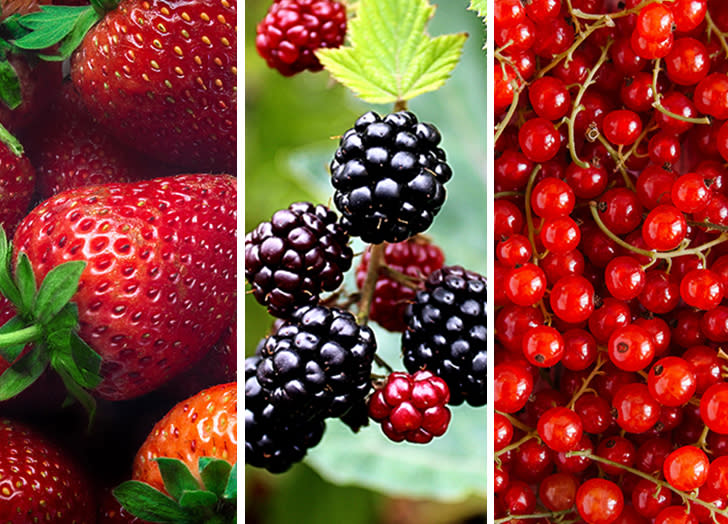
You’re no stranger to blueberries, strawberries, blackberries and raspberries. But there are tons of berry species you won’t find on grocery store shelves. If you go by the botanical meaning—that a berry is a pit-free, fleshy fruit produced from a single flower containing one ovary—everything from bananas to chili peppers to watermelons falls under that definition. So, with a meaning that broad, what is a berry, really? Colloquially, we tend to use the word “berry” for nutrient-rich, juicy, round, soft-fleshed fruits. They generally contain seeds, plus a slew of antioxidants, vitamins and minerals that can boost your memory, reduce inflammation and more. Here are 25 types of berries to use in baked goods, jams, smoothies and beyond.
RELATED: 25 Types of Apples for Baking, Snacking or Turning into Cider
How Many Types of Berries Are There?
Despite the slim pickings at the supermarket, there are dozens upon dozens of different berry species in the world. (More than 400 of them, to be exact.) They range in size, color, flavor and utility, plus come from all over the world. While many of them are safe to eat, some wild berries contain toxic compounds that could cause symptoms like nausea, vomiting, stomach cramping or even death. So be sure to do research on the berries you'd like to nosh on before eating them. (However, if you buy them at the grocery store or farmers market, it's safe to assume they're OK to eat.)
What Are the Healthiest Berries?
It's tough to say if any are objectively healthier than others. Most berries are rich in antioxidants, vitamins and minerals, as well as fiber. Their superpowers differ (for instance, strawberries are teeming with vitamin C, while blackberries boast more than 7 grams of fiber per serving), but none of them are unhealthy. Studies show that berries in general can help control blood sugar, support eye and heart health, reduce inflammation and even protect against Alzheimer's.
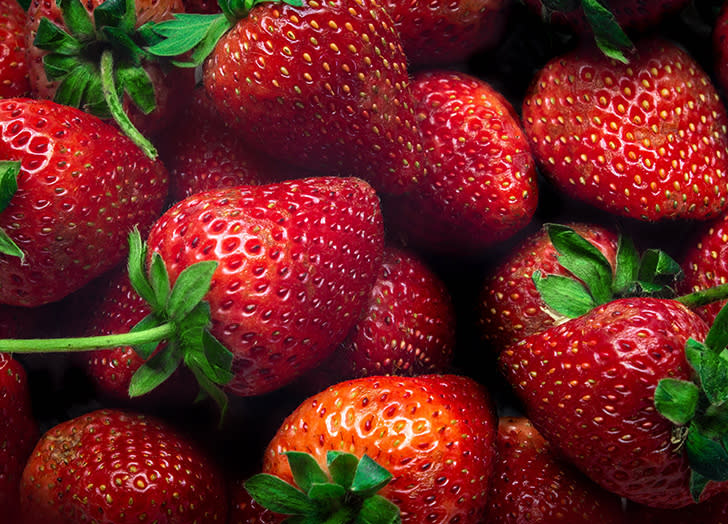
1. Strawberry
Scientific name: Fragaria x ananassa
Taste: sweet, juicy, slightly acidic
Health benefits: Bring on the antioxidant, polyphenol and anti-inflammatory perks. Due to their abundant flavonoids (which are natural compounds found in plants that protect the body against everyday toxins), eating strawberries on the regular may help curb cognitive decline. You can eat more than just the berry, too: Strawberry tops (aka the leaves) have been proven to aid gastrointestinal discomfort and joint pain. Try infusing water or vinegar with strawberry leaves, tossing them in a smoothie or steeping them in boiled water to make tea.
Recipes: Overnight Oats with Chocolate and Strawberries, Cold Soba Noodle Salad with Strawberries, Strawberry Pie with Strawberry Crust
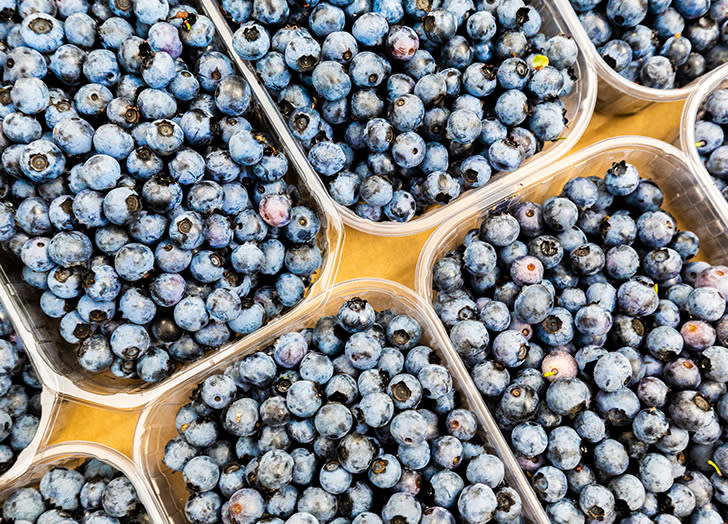
2. Blueberry
Scientific name: Cyanococcus
Taste: sweet, floral, sometimes sour
Health benefits: Blueberries are loaded with heart-healthy potassium, folate, fiber and vitamin C. Like strawberries, blueberries boast plenty of memory-boosting antioxidants and anti-inflammatory properties. Studies show that they might delay cognitive aging as well, thanks to their high flavonoid levels.
Recipes: Blueberry-Ginger Smoothie, Skillet Blueberry Cornbread, Grilled Angel Food Cake with Blueberry Sauce

3. Raspberry
Scientific name: Rubus idaeus
Taste: tart-sweet
Health benefits: Not only do raspberries have 8 grams of fiber per serving, but they’re packed with diverse antioxidants and anti-inflammatory phytonutrients. Research shows that they can help better manage type-2 diabetes and obesity. Their leaves are also loaded with healing properties that have been used to reduce pregnancy side effects for centuries, including nausea and vomiting. Red raspberry leaf tea is touted to strengthen the uterus, shorten labor, reduce complications and prevent postpartum bleeding.
Recipes: Sourdough with Whipped Cottage Cheese and Raspberry Chia Jam, Raspberry Soufflé, Raspberry Prosecco Ice Pops
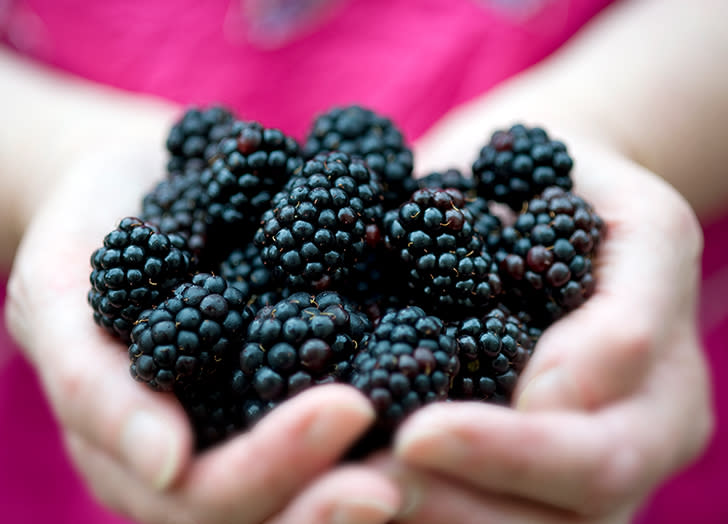
4. Blackberry
Scientific name: Rubus
Taste: tart-sweet, sometimes sour
Health benefits: One cup of blackberries contains about 2 grams of protein and an impressive 8 grams of fiber. Each serving also boasts half your daily recommended amount of vitamin C, as well as antioxidants and brain-boosting polyphenols.
Recipes: Blackberry-Peach Grilled Cheese, Berry Galette, Blackberry Plum Upside-Down Cake
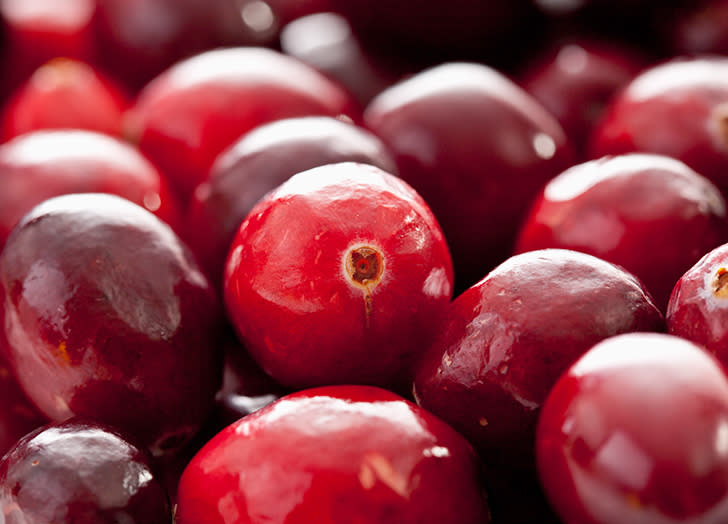
5. Cranberry
Scientific name: Vaccinium subgenus Oxycoccus
Taste: tart, bitter
Health benefits: Cranberries are rich in antioxidants and have anti-inflammatory properties. Regular consumption of raw cranberries is reported to boost the health of the urinary tract, digestive system and immune system. They could also potentially reduce your risk of cancer, ulcers and degenerative diseases rooted in cell damage.
Recipes: 5-Ingredient Red-Wine Cranberry Sauce, Baked Brie with Cranberries and Pomegranate, Balsamic Cranberry Roast Chicken
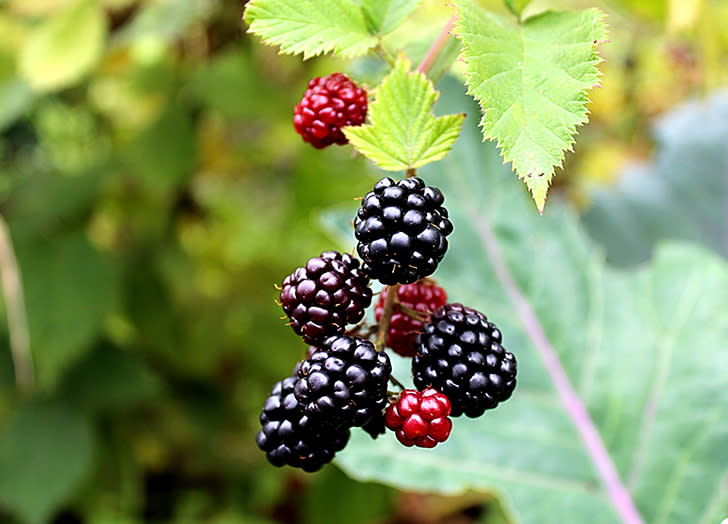
6. Boysenberry
Scientific name: Rubus ursinus x Rubus idaeus
Taste: sweet, tangy, floral
Health benefits: Boysenberries—a cross between a raspberry, blackberry, dewberry and loganberry—are packed with fiber, vitamins and minerals. Research shows that they can help lower blood pressure and aid in preventing fat absorption in the gastrointestinal tract. Since they have lots of antioxidants like other berries, boysenberries can help you maintain a healthy brain and protect against cognitive aging, cell damage and Alzheimer’s.
Recipes: Boysenberry Jelly, Boysenberry Pie, Boysenberry Cheesecake
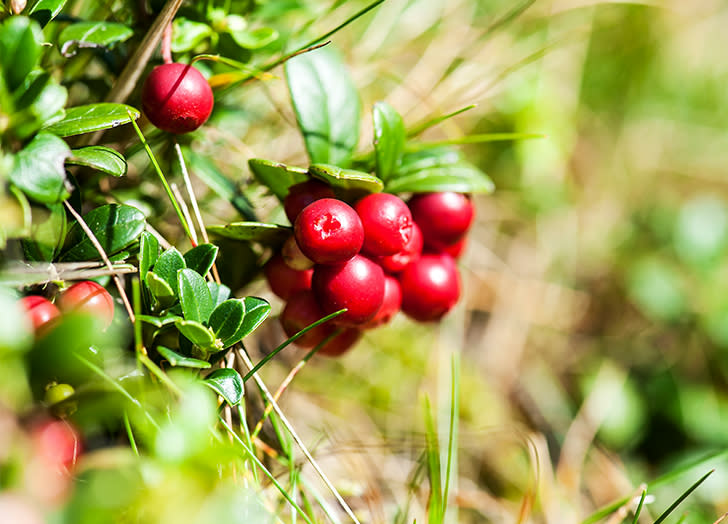
7. Lingonberry
Scientific name: Vaccinium vitis-idaea
Taste: sour, slightly sweet
Health benefits: Like most berries, lingonberries are high in antioxidants, flavonoids and anti-inflammatory agents. One serving packs a whopping 139 percent of your daily recommended manganese, a mineral that helps the body form connective tissue, bones and hormones. Lingonberries may also aid in gut, eye and heart health, promote healthy blood sugar levels and help with weight control.
Recipes: Swedish Meatballs with Lingonberry Sauce, Lingonberry Jam, Fried Herring with Lingonberries
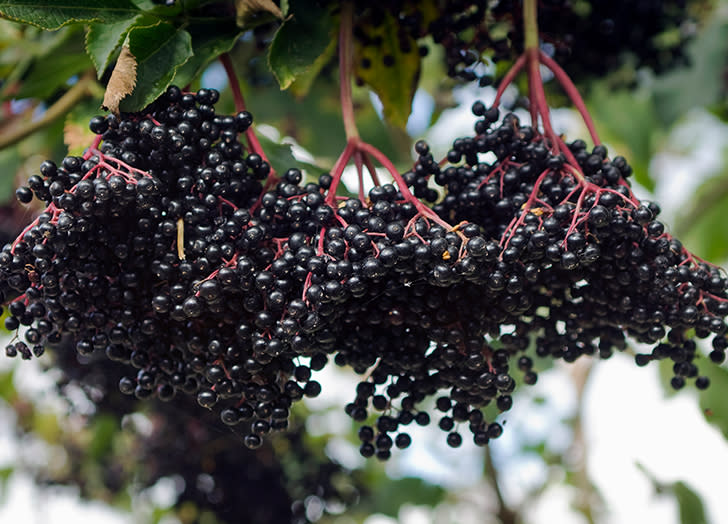
8. Elderberry
Scientific name: Sambucus
Taste: tart-sweet, earthy, bright
Health benefits: Elderberries, which grow on the same tree as elderflowers, are most beloved for their immune-boosting properties. Elderberry syrup, tea and supplements are purported to shorten colds and reduce the respiratory symptoms that come with them. They’re loaded with antioxidants, vitamins A and C and minerals like potassium, phosphorus, iron and copper, so it’s no surprise they’ve been used as medicine for centuries.
Recipes: Elderberry Syrup, Elderberry Jam, Elderberry-Almond Pie
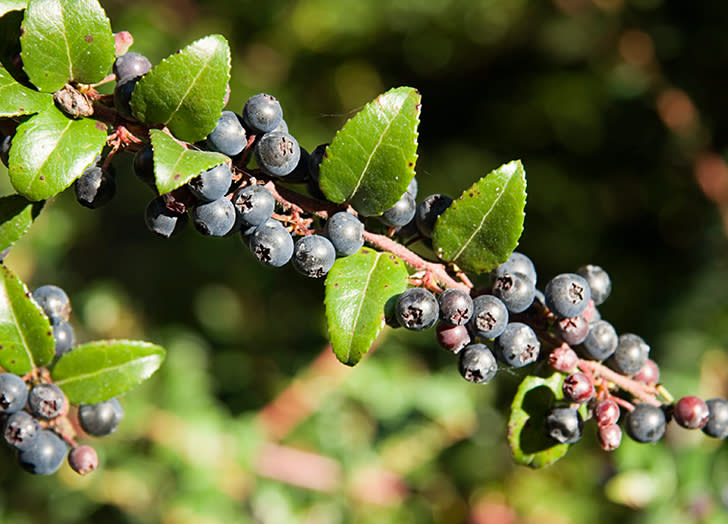
9. Huckleberry/Bilberry
Scientific name: Vaccinium
Taste: sour, bitter, sweet
Health benefits: Huckleberries are similar to blueberries in appearance but contain less sugar, and hence have a bitterer flavor. They’re rich in fiber, vitamins A, B and C, antioxidants and iron. Huckleberries are also known for their ability to lower cholesterol and protect the body against heart disease, varicose veins, glaucoma and muscular degeneration.
Recipes: Huckleberry Fig Shrub, Grilled Salmon with Huckleberry Relish, Lemon Huckleberry Tea Cake
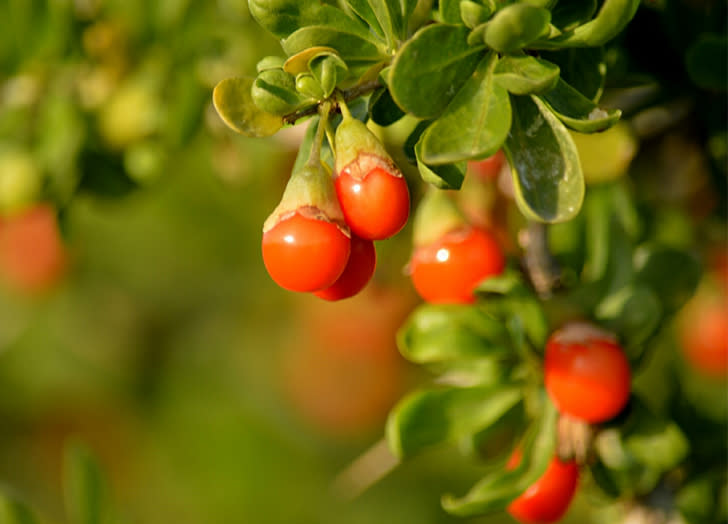
10. Goji Berry/Wolfberry
Scientific name: Lycium barbarum
Taste: bittersweet when raw; tart-sweet and slightly bitter when dried
Health benefits: Hailing from Asia, goji berries have been used in traditional Chinese, Korean, Vietnamese and Japanese medicine since at least the third century. They’re most commonly sold dried in the U.S. and used as a health food, due to their containing 19 amino acids. Goji berries also have a ton of iron, zinc, calcium and antioxidants.
Recipes: Green Smoothie Bowl, Seeds and Goji Berry Granola, Roasted Butternut and Goji Berry Superfood Salad
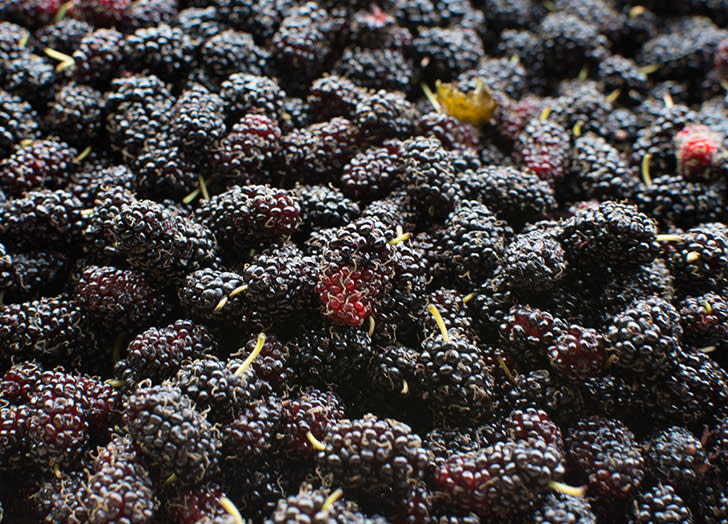
11. Black Mulberry
Scientific name: Morus nigra
Taste: tart-sweet, woody
Health benefits: Similar to blackberries, black mulberries are great for pies and jams, and are especially popular in Southern U.S. kitchens. They’re loaded with antioxidants and polyphenols, which may help you maintain good cholesterol and cardiovascular health, plus prevent obesity. Mulberries can also improve blood sugar and reduce your risk for cancer by decreasing oxidative damage in your cells and tissues.
Recipes: Mulberry Tart with Cardamom and Black Pepper, Coconut Rice Pudding with Mint Mulberry Compote, Rustic Mulberry and Strawberry Galette
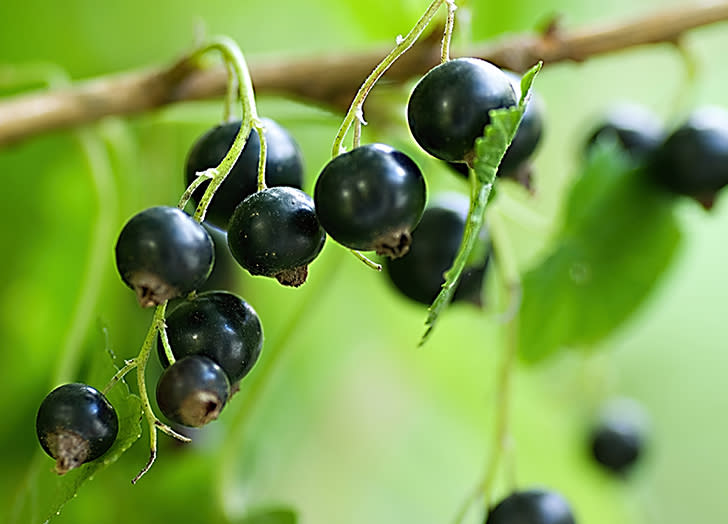
12. Black Currant
Scientific name: Ribes nigrum
Taste: tart and earthy when raw; sweet when dried
Health benefits: These are known to boost kidney function, eye health and immunity. Black currants are also higher in anthocyanins than red currants, which are a type of flavonoid that’s been said to aid in lowering blood pressure, preventing diabetes, improving vision, reducing cancer cell growth and more.
Recipes: Black Currant and Walnut Stuffed Baked Brie, Simple Black Currant Jam, Lemon and Black Currant Stripe Cake
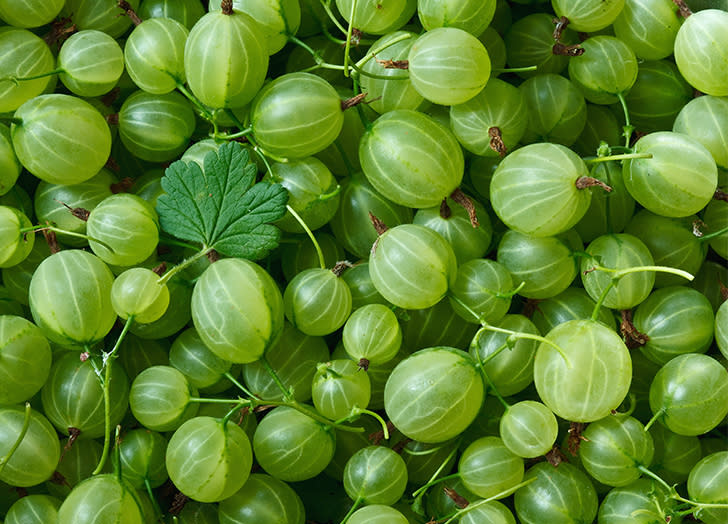
13. Gooseberry
Scientific name: Ribes uva-crispa
Taste: acidic, sour, sweet
Health benefits: Fiber, vitamins, antioxidants, oh my! These are among the sourest berries you can eat, but their inflammation-fighting phytonutrient content makes them worth the pucker. Gooseberries also contain a solid amount of chlorogenic acid, which can help control your blood sugar levels, as well as copper, manganese and potassium. Typically, the darker the gooseberry, the higher anthocyanin content.
Recipes: Cape Gooseberry Pie with Mile-High Meringue, Gooseberry Jam, Gooseberry-Blueberry Tartlets
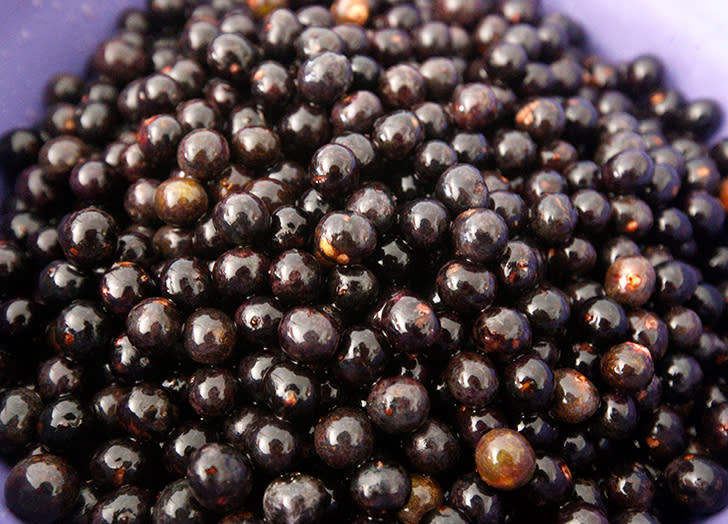
14. Açai Berry
Scientific name: Euterpe oleracea
Taste: sweet, earthy, tart
Health benefits: Thanks to its protein and fiber content, açai is prime for boosting energy and keeping you full. (Odds are you’ve tried a trendy açai bowl or smoothie, or even açai powder.) It’s also been linked to improving blood circulation and preventing blood clots, as it’s purported to act as a sort of natural blood thinner that relaxes the blood vessels. The Brazilian superfruit is also loaded with antioxidants (three times the amount found in blueberries, to be exact) and could help boost brain function and healthy cholesterol.
Recipes: Dark Chocolate Açai Smoothie Bowl, Açai-Banana Sorbet, Chocolate Açai Ice Box Cake
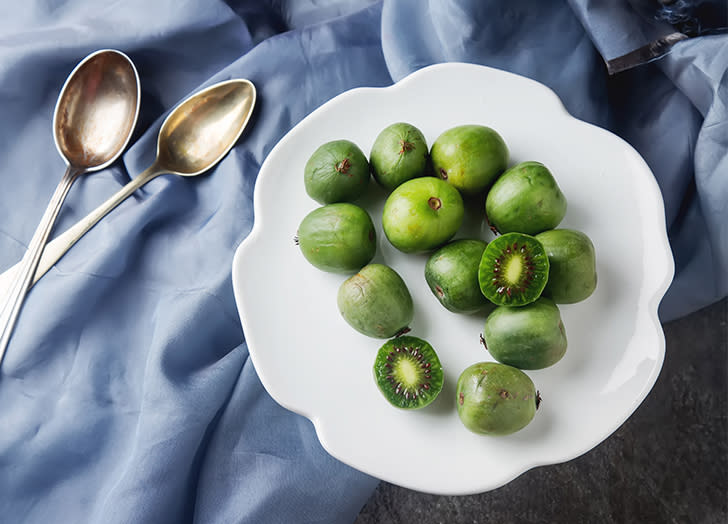
15. Hardy Kiwi/Kiwi Berry/Siberian Gooseberry
Scientific name: Actinidia arguta
Taste: tart, sweet, aromatic
Health benefits: These cuties taste like a fuzz-less kiwi, only more complex and acidic (though they still make a solid substitute for regular kiwis in most recipes). Kiwi berries are packed with vitamins, fiber, magnesium, potassium and antioxidants, just like most of the berries on this list. One serving boasts 120 percent of your daily recommended vitamin C, as well as 2 grams of protein and 8 grams of fiber.
Recipes: Kiwi Berry Raspberry Salad, Kiwi Berry Martini, Kiwi Berry Yogurt Parfait
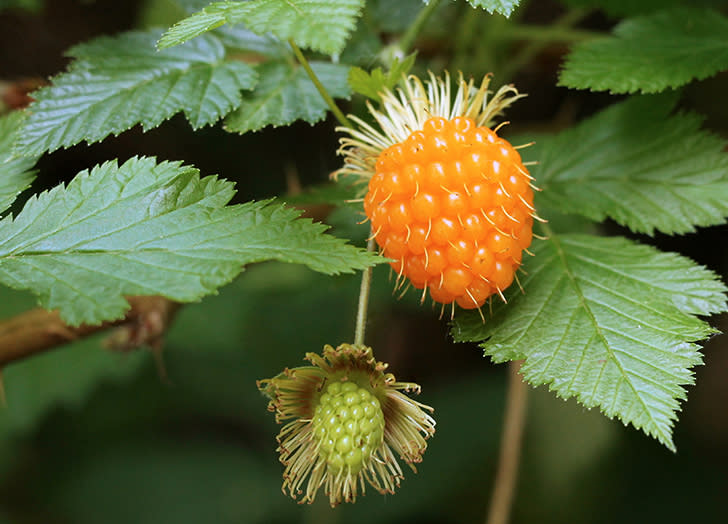
16. Salmonberry
Scientific name: Rubus spectabilis
Taste: floral, sweet
Health benefits: Native to Alaska and Canada, the salmonberry looks a lot like a blush- or orange-colored raspberry. Like most other berries, they have solid fiber content but are low in calories, so they’ll keep you full without weighing you down. They’re also rich in polyphenols, which makes them great for indigestion, cardiovascular health and fighting diabetes.
Recipes: Salmonberry Cake, Salmonberry Pie, Salmonberry Jam
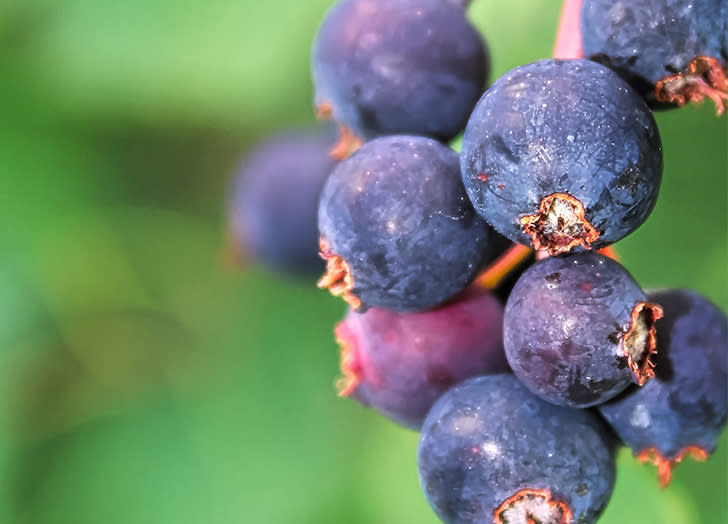
17. Saskatoon Berry/Juneberry
Scientific name: Amelanchier alnifolia
Taste: sweet, nutty, earthy
Health benefits: They look a lot like blueberries but are softer and redder in color. Native to Alaska, Western Canada and parts of the U.S., saskatoon berries are rich in antioxidants and work wonders against inflammation and arthritis. Use them to boost your intake of magnesium, iron, potassium, calcium, copper and more.
Recipes: Saskatoon Berry Butter Tarts, Saskatoon Berry Cream Cheese Crumb Cake, Saskatoon Crisp
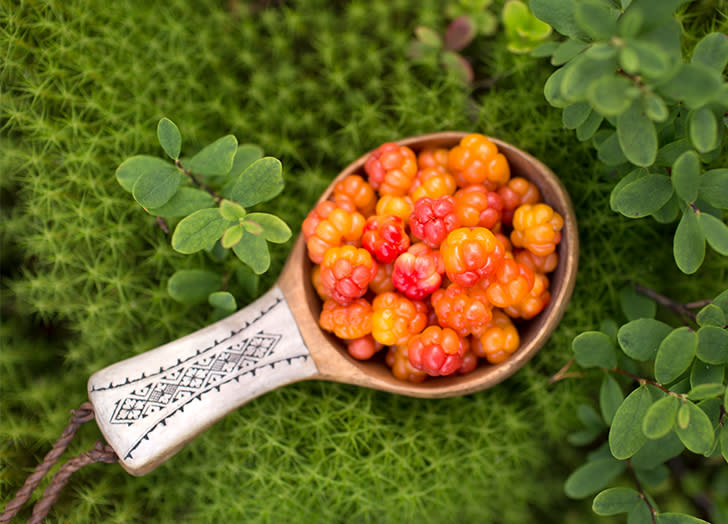
18. Cloudberry
Scientific name: Rubus chamaemorus
Taste: floral, tart, slightly sweet
Health benefits: These pretty berries can withstand cold weather like a charm, whether they’re growing in Maine, Scandinavia or even the Arctic Circle. Thanks to their many antioxidants, cloudberries are linked to strengthening bones, fighting anemia and detoxifying the body. They’re also high in protein compared to other berries, boasting nearly 3 grams per serving.
Recipes: Cardamom Cake with Cloudberry Cream, Oranges with Orange Sorbet and Cloudberry Jam, Cloudberry Ice Cream
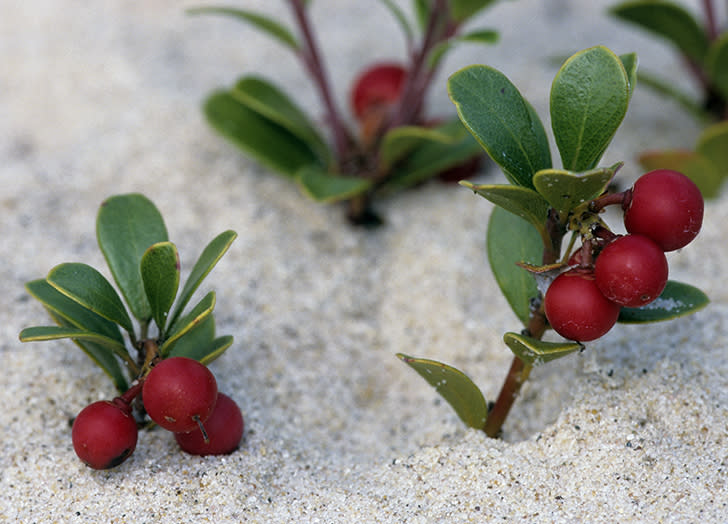
19. Bearberry
Scientific name: Arctostaphylos uva-ursi
Taste: dry and bland when raw; sweeter when cooked
Health benefits: Though naturally found in arctic and subarctic zones around the globe, bearberries can be grown throughout the U.S. Indigenous people have used bearberry leaves in folk medicine for a long time, as they’re believed to relieve everything from headaches to kidney stones to back pain. They’ve also historically been used to treat bladder and urinary tract infections.
Ways to Use Them: Dry the leaves for tea, cook the berries down into sauce or add them to baked goods like muffins, cakes or scones.
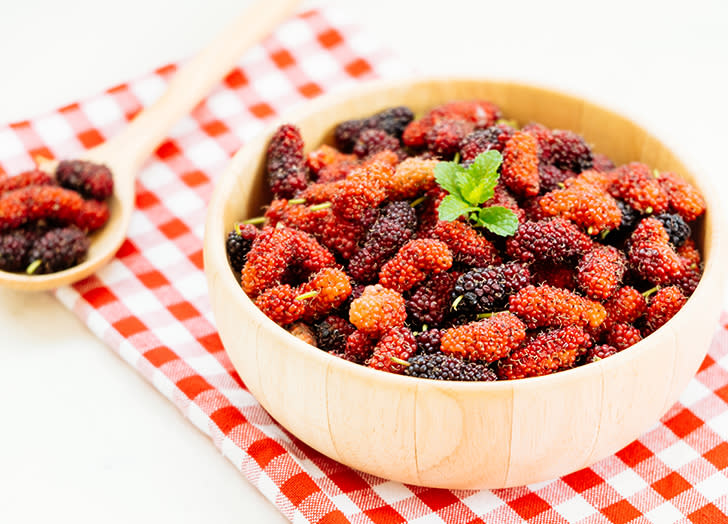
20. Red Mulberry
Scientific name: Morus rubra
Taste: sweet, slightly tart
Health benefits: Similar to black mulberries that resemble blackberries, red mulberries look like long raspberries. Their fiber content may help you maintain a healthy cholesterol level and digestive system, while their high amounts of iron and vitamin C could aid skin health, reduce your risk of heart disease and lower blood pressure. Tea made with mulberry leaves could also help lower blood sugar and reduce inflammation.
Recipes: Mulberry Pie, Mulberry Jam, Mulberry Pancakes
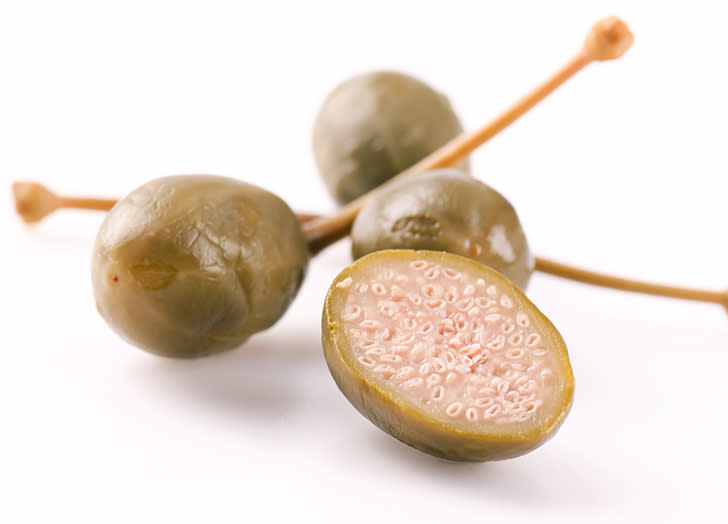
21. Caperberry
Scientific name: Capparis spinosa
Taste: tangy, herbal, sharp
Health benefits: Capers are the pickled flower buds of the Mediterranean caper bush. If you let those buds grow instead of pickling them prematurely, they’ll mature into caperberries. Caperberries are rich in antioxidants, iron, calcium and vitamins A, B2 and K. They were used in ancient times as both medicine and an aphrodisiac.
Recipes: Baked Feta with Dill, Caper Berries and Citrus, Seared Beef, Grilled Pepper and Caper Berries, Sea Bass with Caper Berries, Green Olives and Meyer Lemon
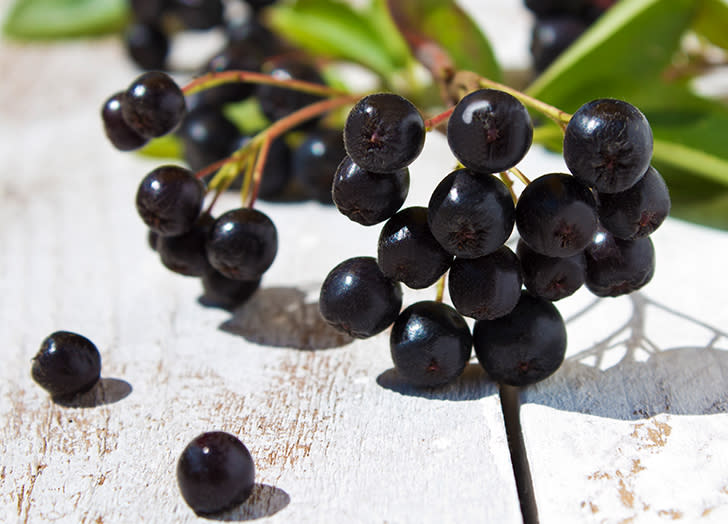
22. Chokeberry
Scientific name: Aronia
Taste: dry, bitter, sharp
Health benefits: Chokeberries are one of the most bitter out there, thanks to their notable tannins. Just like a glass of tannic red wine, they’ll leave your mouth feeling dry. When cooked or baked, they’re less intensely bitter. Some studies show that chokeberries are one of the best for cardiovascular health, and their antioxidants help reduce inflammation, blood pressure and cholesterol.
Recipes: Aronia Berry Salad with Squash and Brussels Sprouts, Aronia-Açai Sorbet, Aronia Blueberry Pie
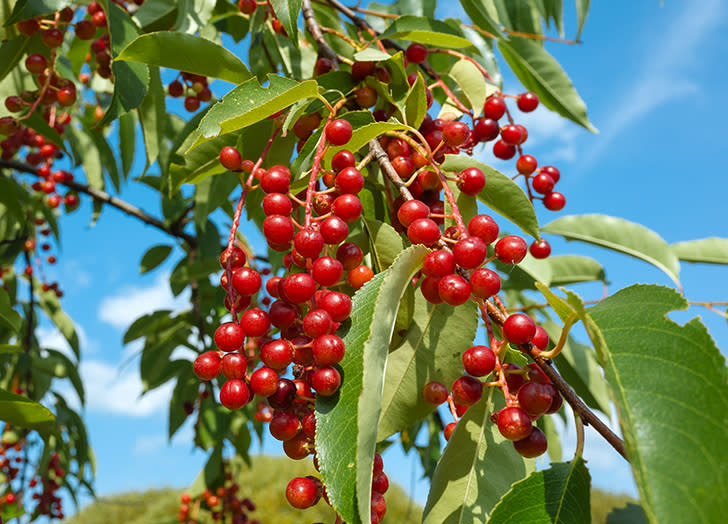
23. Chokecherry
Scientific name: Prunus virginiana
Taste: bitter, astringent, tart
Health benefits: Not to be confused with chokeberries, chokecherries are chock-full of disease-fighting antioxidants and flavonoids, as well as quinic acid, which is hailed for preventing urinary tract infections. Research shows that quinic acid is also linked to improved circulation and blood vessel function. Native Americans used chokecherry tea to treat ailments like colds, tuberculosis and diarrhea, while the berries were eaten raw to aid digestion.
Recipes: Chokecherry Jelly, Chokecherry Coulis Over La Luna
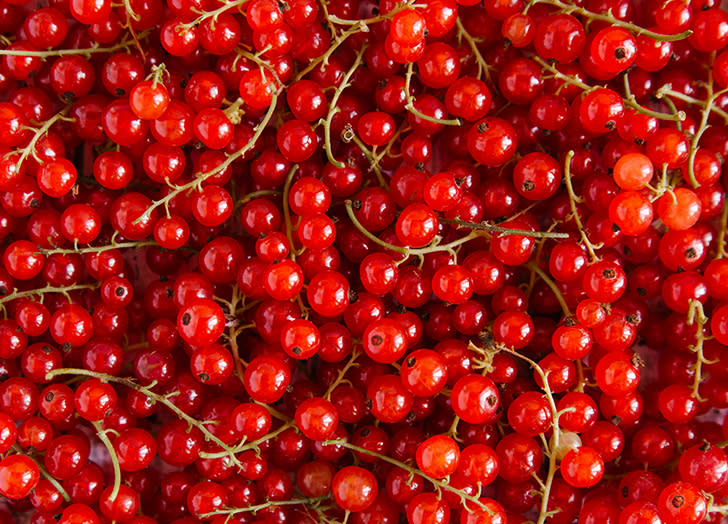
24. Red Currant
Scientific name: Ribes rubrum
Taste: tangy, tart, slightly sweet
Health benefits: Red currants are high in antioxidants, flavonoids and vitamin B, which helps protect the body’s tissues and wards off diabetes and apoplexy. Like black currants, red currants aid the immune and respiratory systems and are rich in fiber.
Recipes: Red Currant and Mint Jelly, Red Currant Clafoutis, Vanilla Panna Cotta with Red Currant and Raspberry Coulis
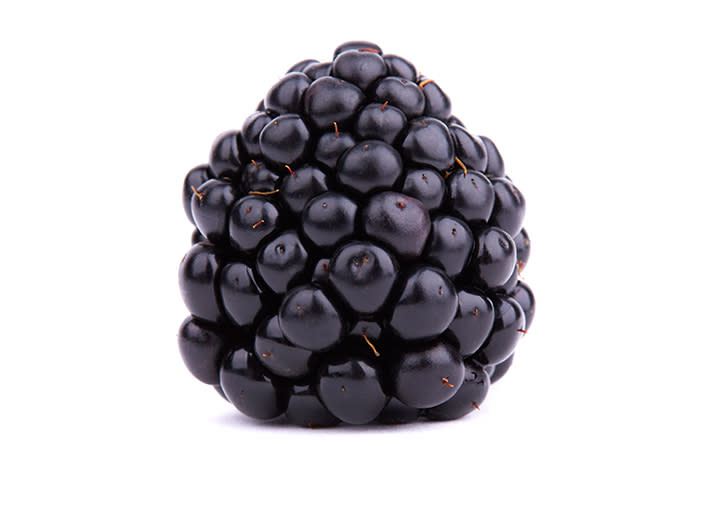
25. Dewberry
Scientific name: Rubus flagellaris
Taste: tart, slightly sweet, slightly bitter
Health benefits: These wild black berries grow on long vines throughout the Pacific Northwest and taste similar to the blackberries you know and love, only more tart and bitter. They have significant amounts of vitamin A and C, magnesium, zinc and copper. Dewberries’ potassium content can also help lower blood pressure.
Recipes: Dewberry Jelly, Dewberry Cobbler, Dewberry-Lemon Scones
RELATED: 10 Types of Oranges for Juicing, Snacking and Everything in Between

